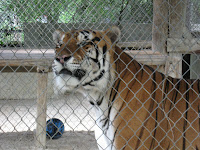Marie Selby Botanical Gardens is a non profit organization specializing in tropical plants. The gardens have more than 20,000 plants, including a collection of over 6,000 orchids, with many of the plants collected by research staff during tropical rain forest expeditions.
Distinct garden areas display a lush rain forest, koi pond, bamboo garden, banyan grove, cactus garden, a collection of Cyclades, and an outdoor butterfly garden.

Visitors begin the journey through the conservatory and proceed through the plant displays.
Bill and Marie Selby built the 2-story, Spanish style house (the first floor is now a cafe) on the property in the early 1920s where Marie began landscaping. Despite their wealth they lived a modest life in the small home and pursued outdoor activities instead of social gatherings.
Marie lived quietly in the home, after her husband's death in 1956, until her death in 1971. Her final wish to leave the property as a botanical garden was fulfilled in 1975 when the Marie Selby Botanical Gardens opened to the public.

The gardens have since expanded to almost 13 acres and now include an elegant mansion that houses a museum, eight greenhouses, and the headquarters for The Bromeliad Identification Center, The Orchid Identification Center and the Selby Gardens' Herbarium. Thus, Selby Gardens is both a research/education center and a beautiful showplace.
Selby Gardens is located at 811 South Palm Avenue in Sarasota, Florida. It is open daily from 10 a.m. to 5 p.m., except Christmas. Admission is $17 for adults and $6 for children 6-11. Members enjoy free admission.
 The Edison & Ford Winter Estates Holiday Nights 2010 featured traditional colored lights and decorations recreating a Christmas theme like one the Edison's and Ford's may have enjoyed during the 1920s.
The Edison & Ford Winter Estates Holiday Nights 2010 featured traditional colored lights and decorations recreating a Christmas theme like one the Edison's and Ford's may have enjoyed during the 1920s. 










































